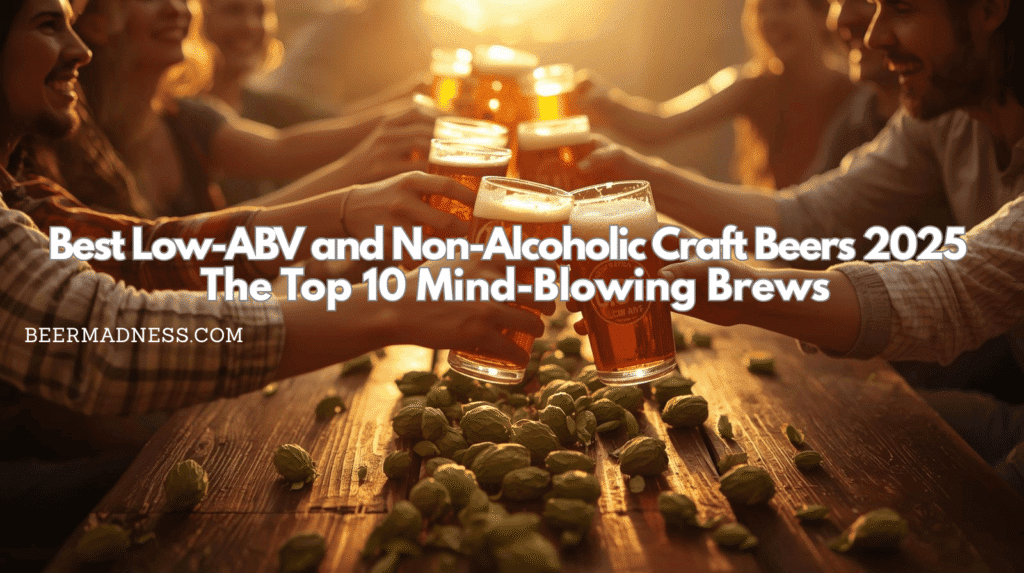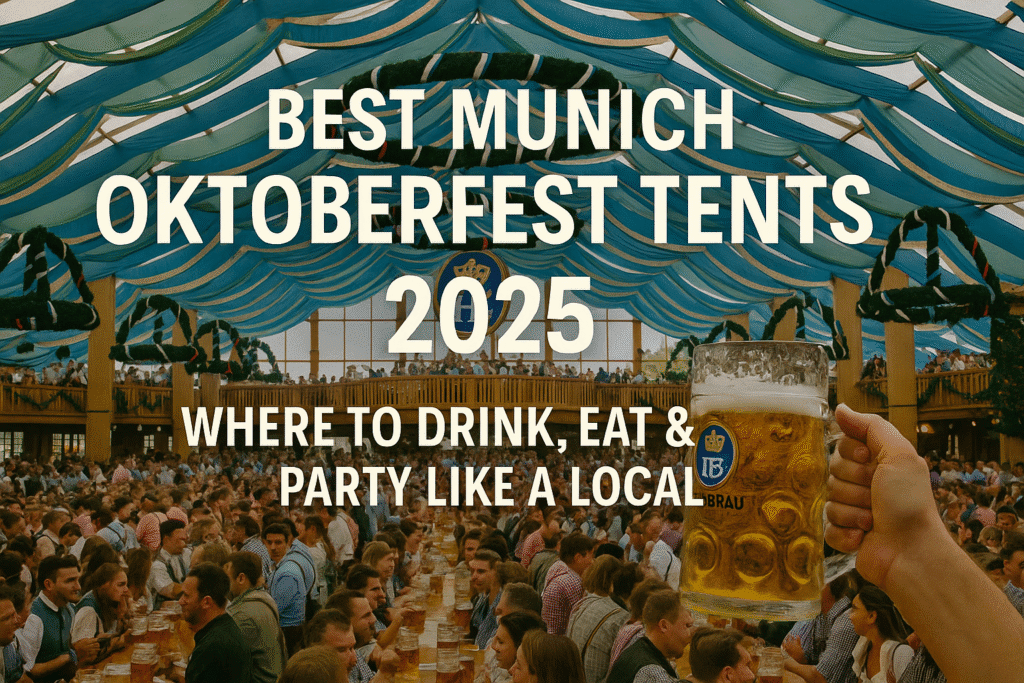There was a time when “non-alcoholic beer” meant flat, flavorless, and forgettable. But 2025 is proving that era is gone for good. Today’s brewers are reinventing the game with innovative recipes, cutting-edge yeast strains, and an obsessive focus on taste — crafting beers that celebrate flavor, not just buzz.
Whether you’re embracing mindful drinking, participating in Dry January, or simply looking for something lighter to sip during long gatherings, the new wave of low-ABV and non-alcoholic craft beers delivers all the aroma, texture, and satisfaction you’d expect from a full-strength pint.
From citrus-packed session IPAs to silky dark stouts with zero alcohol, breweries across the globe are challenging preconceptions and creating brews that stand proudly alongside their stronger siblings.
Looking for the best low-ABV and non-alcoholic craft beers in 2025?
These brews combine craftsmanship, complexity, and character — all the pleasure of great beer, none of the morning-after regret.
This new generation of light-and-low beers isn’t about restriction — it’s about possibility. Thanks to improved brewing technology and a growing community of mindful drinkers, low-ABV brewing has become one of the fastest-growing movements in craft beer culture.
If you’re ready to explore how flavor and balance can coexist beautifully with moderation, this guide will take you through the styles, the science, and the standout breweries that are redefining what beer can be in 2025.
This post may contain affiliate links. If you click and purchase, I may receive a small commission at no extra cost to you. Learn more
Why Low-ABV and Non-Alcoholic Craft Beers Are Booming
Just a few years ago, “non-alcoholic beer” was something most beer lovers politely ignored. But in 2025, it has become one of the most exciting frontiers in brewing. The shift is driven by more than health trends — it’s about balance, creativity, and redefining what it means to enjoy beer.
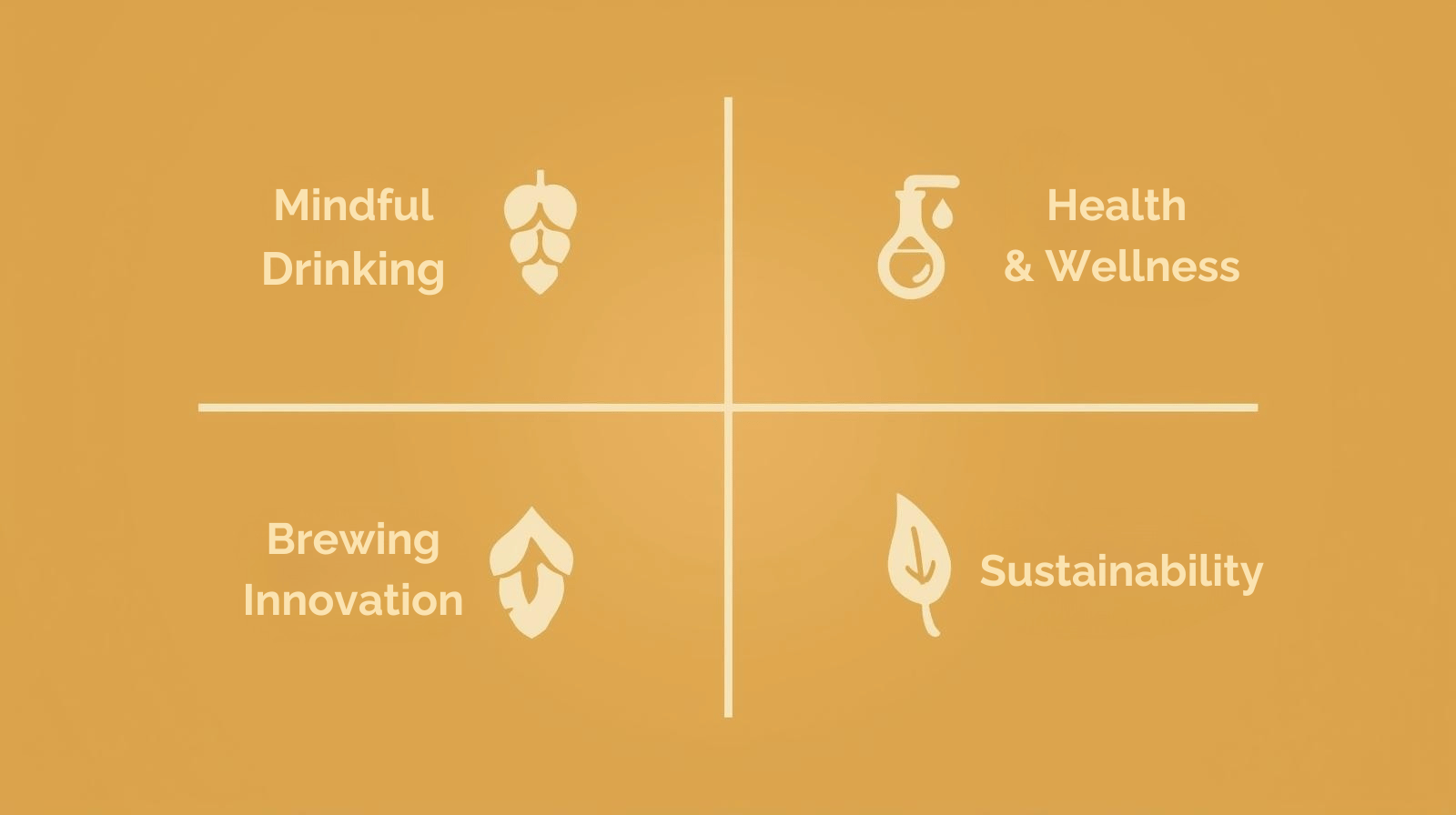
Across Europe and the US, breweries large and small are responding to a new generation of drinkers who want flavor without fatigue. Many are prioritizing low-ABV and non-alcoholic craft beers that deliver the same aroma, texture, and body as traditional brews — but with less alcohol, fewer calories, and no compromise on craftsmanship.
Featured snippet opportunity:
What is a low-ABV craft beer?
A low-ABV craft beer typically contains between 2.5% and 4% alcohol by volume, offering the full character of a traditional beer with a lighter, more sessionable feel. Non-alcoholic craft beers, meanwhile, usually sit below 0.5% ABV, achieved through careful brewing or dealcoholization methods.
A Shift in Drinking Culture
The rise of the sober-curious movement, the popularity of Dry January, and a broader focus on mental health and wellness have inspired many to rethink their relationship with alcohol. Drinkers are no longer looking for excess — they’re seeking connection, flavor, and control. According to the Brewers Association, low-alcohol and alcohol-free options are among the fastest-growing segments in craft brewing, reflecting this shift toward mindful enjoyment.
Better Brewing Technology
Innovation has played a huge part. Brewers now use advanced yeast strains that limit alcohol production, along with cold-filtration and vacuum distillation techniques that preserve aroma and mouthfeel. The result? Beers that taste authentic, not diluted. Many of the world’s top breweries now run specialized programs focused solely on low-ABV brewing.
For deeper insight into how science meets flavor, Good Beer Hunting has documented how craft breweries are adapting traditional methods to create complex, balanced low-alcohol beers.
Flavor Over Buzz
Ultimately, the rise of low-ABV and non-alcoholic craft beers is about evolution. It’s no longer about what’s missing — it’s about what’s gained: freedom, creativity, and inclusivity. Brewers are proving that a beer doesn’t need to be strong to be extraordinary.
As the European Beer Consumers Union notes, this trend isn’t a fad but a movement toward a more sustainable, diverse, and flavor-driven beer culture — one that invites everyone to raise a glass, no matter what’s inside it.
How Breweries Create Big Flavor with Less Alcohol
One of the biggest myths about low-alcohol beers is that they’re thin, bland, or lacking in character. The truth? Today’s craft brewers are proving the opposite — that innovation, technique, and precision can create a beer just as satisfying at 3% ABV as one at 7%. Behind every great low-ABV and non-alcoholic craft beer, there’s serious brewing science at work.

1. The Power of the Mash
Flavor starts in the mash tun — where malted grains are steeped to release sugars. By adjusting mash temperature and time, brewers can control how much fermentable sugar the yeast will convert into alcohol. A slightly higher mash temperature leaves more residual sugars, giving low-alcohol beers a fuller body and smoother mouthfeel without increasing strength.
This approach is common in modern “table beers” and session IPAs, which rely on balance rather than bitterness. The result? A beer that drinks easy but still feels rich and rounded.
2. Yeast Innovation
Brewers are now experimenting with specialized yeast strains that naturally limit alcohol production. Companies like Lallemand Brewing and Fermentis have developed yeasts designed specifically for low-attenuation fermentation — meaning they consume fewer sugars and generate less alcohol. These yeasts preserve delicate malt and hop aromas that might otherwise be lost in stronger brews.
Non-alcoholic beers often use an additional step called arrested fermentation, stopping yeast activity early while maintaining flavor complexity.
3. Dry Hopping for Aroma, Not Strength
In the world of hops, timing is everything. Brewers add hops late in the process (known as dry hopping) to extract aromatic oils instead of bitterness. This technique infuses low-ABV and non-alcoholic craft beers with the same intense aromas found in IPAs — think citrus, tropical fruit, and pine — while keeping alcohol levels low.
Some breweries are even using hop oils and extracts to fine-tune aroma layers in alcohol-free recipes without compromising freshness.
4. The Body Matters
Body and texture are what make a beer feel satisfying. Without alcohol’s natural weight, brewers turn to creative solutions: oats for creaminess, lactose for sweetness, or specialty malts for depth and color. These additions give lighter beers the structure they need to hold their flavor.
The American Homebrewers Association notes that even subtle adjustments — like using more dextrin malt or tweaking carbonation — can dramatically enhance mouthfeel in low-alcohol recipes.
5. Dealcoholization: The Finishing Touch
For completely alcohol-free beers, brewers may start with a standard-strength recipe, then remove alcohol afterward through controlled evaporation or vacuum distillation. The key is keeping the beer below 80°C, preserving its volatile hop compounds and delicate aromas. Some modern systems even use reverse osmosis, filtering out alcohol molecules while maintaining full flavor integrity.
It’s high-tech, but the result is simple: authentic beer taste without the buzz.
In short, low-alcohol brewing isn’t about subtraction — it’s about balance. When done right, these beers showcase craftsmanship at its purest form: making every degree of flavor count.
The 10 Best Low-ABV and Non-Alcoholic Craft Beers in 2025
When it comes to low-ABV and non-alcoholic craft beers, 2025 is overflowing with innovation. Breweries around the world are mastering the art of big flavor with small numbers — from silky stouts to tropical IPAs and bright golden ales that defy expectations.
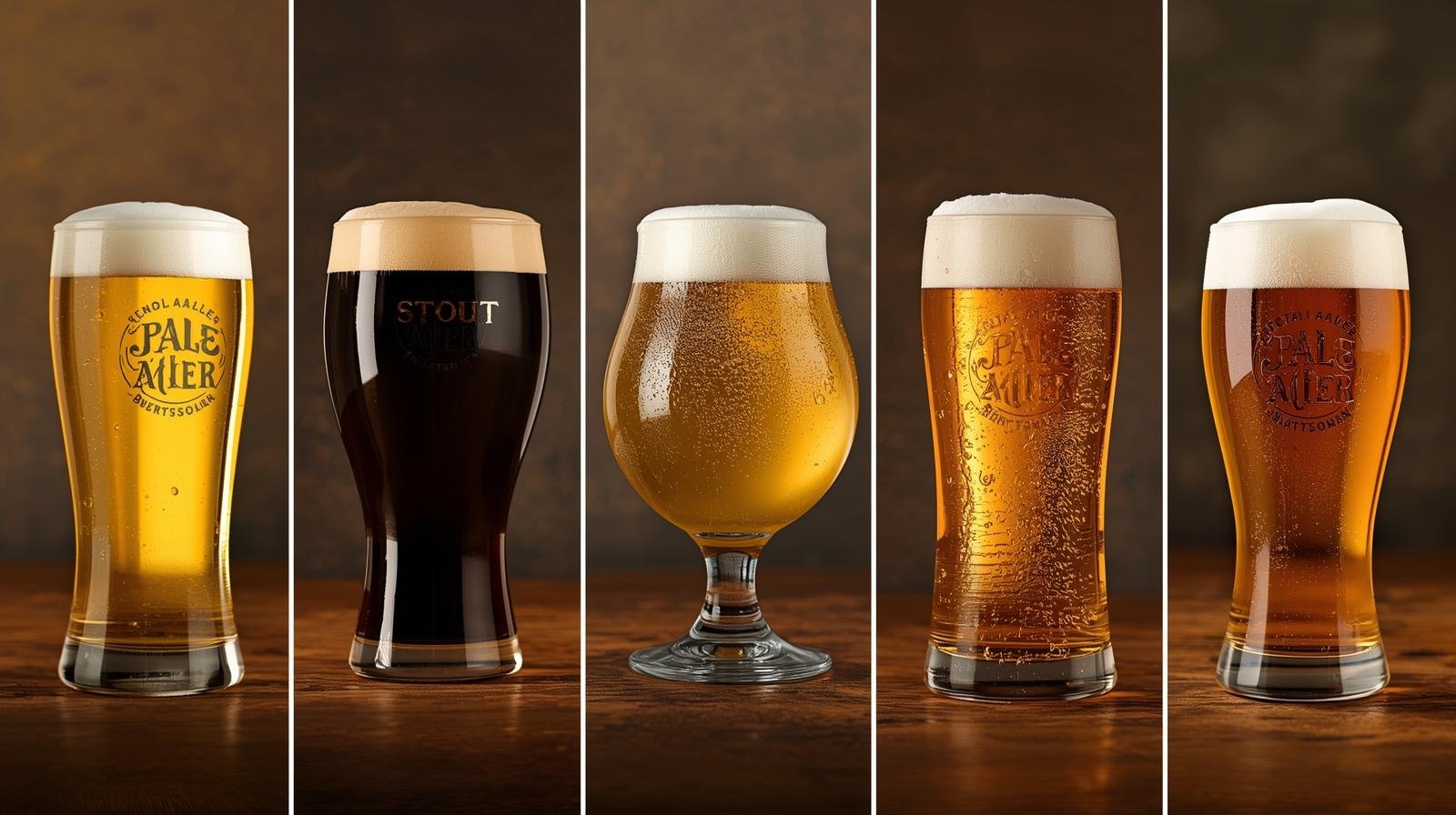
Here are ten standout brews that prove you don’t need high alcohol to have a great beer experience.
1. Athletic Brewing Co. – Upside Dawn (USA, 0.5%)
Athletic Brewing has become the gold standard for non-alcoholic craft beer, and Upside Dawn remains one of its finest creations. This golden ale pours bright and clear with floral hop aroma and a crisp, bready malt backbone.
It’s brewed with premium English and American hops, creating a delicate balance of citrus and earthy notes — ideal for any occasion where you want flavor without fuzziness.
Why it stands out: Authentic craft character, sessionable perfection, and consistency that rivals full-strength ales.
Learn more: Athletic Brewing
2. BrewDog – Nanny State (Scotland, 0.5%)
When BrewDog launched Nanny State, it made headlines for all the right reasons. Packed with Centennial, Amarillo, and Cascade hops, it’s a bold statement in balance — intense aroma, assertive bitterness, and an ABV low enough to make it an all-day beer.
Why it stands out: Punchy hop profile and roasted malt depth in a 0.5% beer.
Learn more: BrewDog
3. Big Drop Brewing Co. – Galactic Milk Stout (UK, 0.5%)
A dark beer without alcohol that actually feels like a stout? Big Drop nailed it. Galactic Milk Stout delivers layers of chocolate, coffee, and roasted malt with a silky lactose sweetness that smooths every sip.
The brewery’s proprietary brewing method (no alcohol removal required) ensures that body and aroma remain intact.
Why it stands out: Creamy, comforting, and deeply flavorful — a non-alcoholic beer that defies category limits.
Learn more: Big Drop Brewing Co.
4. Maisel & Friends – Pale Ale Light (Germany, 2.8%)
From one of Bavaria’s most respected breweries comes a bright, aromatic Pale Ale that captures the heart of modern session brewing. Pale Ale Light offers zesty hops, soft caramel malts, and a crisp finish that keeps you coming back for another sip.
Why it stands out: Classic German precision meets new-age craft creativity.
Learn more: Maisel & Friends
5. Mikkeller – Limbo Raspberry (Denmark, 0.3%)
Mikkeller’s Limbo series shows just how playful non-alcoholic brewing can be. The Raspberry edition bursts with natural fruit aroma, soft acidity, and a refreshing tang that makes it as much a palate cleanser as a beer.
Why it stands out: Funky, fruity, and fresh — a gateway beer for wine or cider drinkers exploring the NA world.
Learn more: Mikkeller
6. To Øl – Under the Radar (Denmark, 3.5%)
This low-ABV farmhouse ale brings rustic charm to modern craft brewing. It’s dry, spicy, and lightly funky, with subtle citrus and pepper notes thanks to Belgian yeast. Under the Radar has just enough body to carry complexity while remaining perfectly drinkable.
Why it stands out: Proof that farmhouse ales can shine below 4% ABV.
Learn more: To Øl
7. Guinness – 0.0 (Ireland, 0.0%)
It took decades for Guinness to perfect its alcohol-free version — and it was worth the wait. Guinness 0.0 delivers the same iconic creamy head, roasted barley aroma, and smooth body as the original Draught, without the alcohol.
Each pour feels like a pint of comfort and nostalgia — a masterclass in brewing innovation.
Why it stands out: Authentic taste, zero compromise, and the world’s most recognizable stout experience.
Learn more: Guinness 0.0
8. Cloudwater Brew Co. – Small Pale (UK, 2.9%)
Known for pushing the boundaries of hop-forward brewing, Cloudwater’s Small Pale is a showcase of balance and craftsmanship. Expect juicy citrus, peach, and light tropical fruit aromas on a soft, smooth malt base.
Why it stands out: A perfect introduction to modern British low-ABV craft beer — fresh, aromatic, and endlessly sessionable.
Learn more: Cloudwater Brew Co.
9. Brooklyn Brewery – Special Effects IPA (USA, 0.4%)
Brooklyn Brewery’s Special Effects IPA proves that hop-driven flavor doesn’t need high alcohol. It’s bursting with grapefruit, pine, and passionfruit aromas, balanced by a biscuity malt sweetness.
Why it stands out: Clean, crisp, and unmistakably IPA — all the hop aroma with none of the headache.
Learn more: Brooklyn Brewery
10. Brulo – Lust for Life DDH IPA (UK, 3.0%)
Brulo has built its reputation entirely on alcohol-free and low-alcohol craft beer, and Lust for Life is one of its stars. Double-dry-hopped with Citra and Mosaic, it delivers intense tropical fruit character and a soft, hazy texture that rivals any New England IPA.
Why it stands out: Big hops, low alcohol, and pure joy in a can — a modern classic of mindful brewing.
Learn more: Brulo Beer
From London to Copenhagen and New York to Bavaria, brewers are proving that creativity thrives under constraint. These ten beers redefine what “light” means in craft beer — not less flavor, just more intention.
Where to Find These Beers
Ready to taste the world’s best low-ABV and non-alcoholic craft beers for yourself?
Many of the breweries featured above are available through trusted online marketplaces like Beers of Europe, where you can explore hundreds of mindful brews from around the world — all delivered straight to your door.
For accessories, glassware, or even home-tasting kits, Amazon offers everything you need to set up your perfect session.
The Science Behind “Zero” Alcohol: What Does 0.0% Really Mean?
If you’ve ever picked up a “0.0%” beer and wondered whether it’s truly alcohol-free, you’re not alone. The truth is a little more nuanced — and fascinating. Modern brewing technology has made it possible to produce beers with virtually no alcohol while preserving the taste and aroma that make them unmistakably beer. But “zero” doesn’t always mean the same thing everywhere.
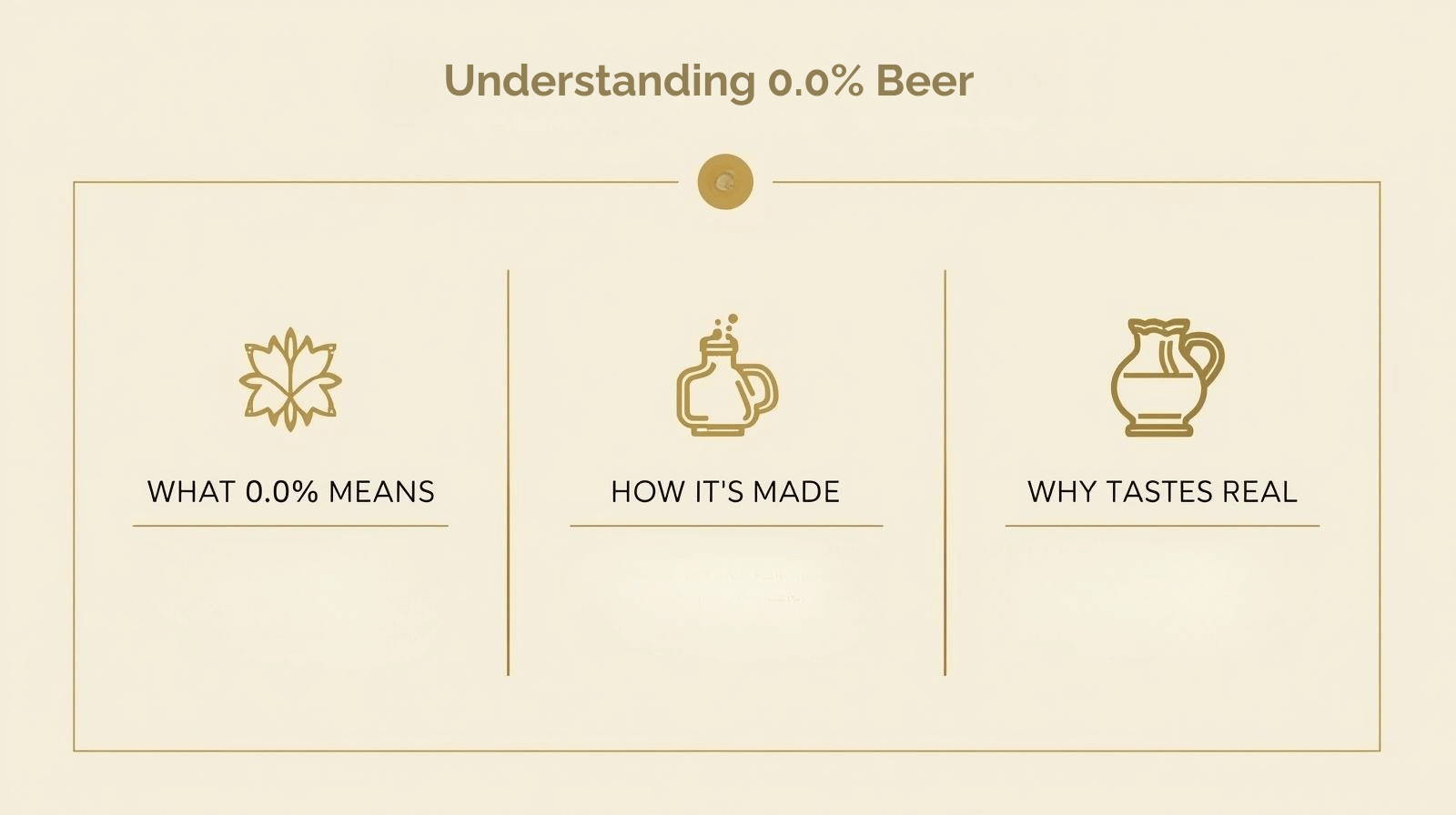
Defining Alcohol-Free Beer
Featured Snippet Opportunity:
Is non-alcoholic beer really alcohol-free?
In most countries, “non-alcoholic beer” refers to beers containing less than 0.5% ABV, an amount so small it’s considered negligible and safe for drivers, athletes, and anyone avoiding alcohol for lifestyle or health reasons.
Different countries regulate labeling differently:
- United States: “Non-alcoholic” beers can contain up to 0.5% ABV.
- European Union & UK: The term “alcohol-free” applies to beers with ≤0.05% ABV, while “low-alcohol” covers beers up to 1.2%.
- Germany: Beers labeled alkoholfrei often sit around 0.3–0.5%, aligning with global standards.
How Brewers Achieve “Zero”
Brewers use several techniques to remove or avoid alcohol formation while retaining flavor:
- Arrested Fermentation:
The brewing process is stopped early, before yeast converts all the sugars into alcohol. The result is a beer with sweetness, body, and low alcohol, but still a genuine malt flavor. - Dealcoholization:
Alcohol is produced normally, then gently removed through vacuum distillation or reverse osmosis. These methods ensure the temperature stays low, protecting delicate hop oils and volatile aroma compounds. - Cold Fermentation with Specialized Yeast:
Some yeast strains, like those developed by Lallemand Brewing and Fermentis, naturally produce minimal alcohol while generating authentic beer flavors — a game changer for craft brewers seeking authenticity without compromise.
Why 0.0% Doesn’t Mean Zero Flavor
Alcohol contributes texture and perceived warmth, but modern low-ABV brewers have found clever ways to recreate that depth. They use:
- Body-enhancing grains like oats or wheat for smoothness.
- Advanced carbonation profiles to mimic “full beer” mouthfeel.
- Layered hop additions to preserve aroma and balance sweetness.
These innovations ensure that even without alcohol, you’re tasting something complete — not a watered-down imitation.
Safety, Taste, and Perception
While non-alcoholic beers can technically contain trace alcohol (comparable to fruit juice or ripe bananas), they’re widely recognized as safe for anyone who wants to reduce or eliminate alcohol intake. Drivers, athletes, and expectant mothers often enjoy these beers as social, refreshing alternatives that don’t sacrifice experience for abstinence.
In short: “0.0%” isn’t just a number — it’s the culmination of decades of brewing science. It represents a balance between innovation, authenticity, and inclusivity — proof that great beer doesn’t depend on alcohol content, but on craftsmanship.
Pairing Ideas: Enjoying Low-ABV and Non-Alcoholic Beers
One of the biggest misconceptions about low-ABV and non-alcoholic craft beers is that they’re only for sober occasions. In reality, these lighter brews are incredibly versatile — and they often pair with food even better than their boozier counterparts. With their cleaner finish, subtle carbonation, and lower alcohol content, they enhance rather than overpower your meal.

1. Light & Bright – Perfect for Fresh and Zesty Dishes
Citrus-forward session IPAs and alcohol-free wheat beers pair beautifully with salads, ceviche, grilled fish, or sushi. Their crisp acidity cuts through oil and salt, cleansing the palate between bites.
Try it with:
- Athletic Brewing’s Upside Dawn and a summer salad with lemon vinaigrette.
- Mikkeller Limbo Raspberry with goat cheese crostini or fruit tart.
BeerMadness Tip: Non-alcoholic beers served at 6–8°C (43–46°F) retain more aroma and pair better with delicate dishes.
2. Malty & Toasted – Comfort Food Companions
Amber ales and light stouts offer nutty, caramelized depth that complements hearty meals. A low-alcohol brown ale or 0.5% stout can elevate classics like burgers, roast chicken, or pasta with creamy sauce.
Try it with:
- BrewDog Nanny State and a grilled cheddar burger.
- Big Drop Galactic Milk Stout and a slice of dark chocolate cake.
3. Funky & Tart – The New Cheese and Charcuterie Stars
European-style sour and farmhouse beers, especially those brewed below 4% ABV, pair brilliantly with cheeses, cured meats, and pickled vegetables. Their acidity brightens rich flavors and refreshes your palate after every bite.
Try it with:
- To Øl Under the Radar with soft Brie and prosciutto.
- Brulo Lust for Life DDH IPA with spicy salami or sharp cheddar.
4. Crisp & Refreshing – Your Brunch and Afternoon Allies
Lighter beers are perfect for earlier meals or daytime gatherings — think brunches, picnics, or lazy weekends. Their moderate carbonation and low bitterness make them ideal for foods like eggs, smoked salmon, or pancakes.
Try it with:
- Maisel & Friends Pale Ale Light with eggs Benedict.
- Cloudwater Small Pale with avocado toast and roasted tomatoes.
5. Sweet & Smooth – Dessert Pairings That Surprise
Yes, you can absolutely finish dinner with a non-alcoholic beer. Many craft stouts and porters feature chocolate, vanilla, or coffee notes that pair perfectly with desserts.
Try it with:
- Guinness 0.0 alongside tiramisu or dark chocolate mousse.
- Big Drop Galactic Milk Stout with brownies or salted caramel ice cream.
Bonus: Host a “Mindful Tasting Night”
If you’re exploring moderation, make it social. Invite friends for a tasting of low-ABV and non-alcoholic craft beers — pair them with snacks or small plates, and note how the flavor profiles evolve. You’ll be surprised how much complexity hides in each sip once you’re paying attention to the subtleties.
These pairings remind us that beer is more than alcohol — it’s about flavor, mood, and connection. With a thoughtful approach, low-ABV beers can elevate everything from brunch to dessert, one mindful pour at a time.
Explore More Pairing Adventures
If this section sparked your appetite for great matches, there’s a whole world of flavor waiting to be explored. 🍫🔥
For dessert lovers, dive into our Top 10 Beers to Pair with Chocolate — where dark stouts meet rich truffles and cocoa magic happens.
And if your idea of perfection involves smoke, spice, and sizzling grills, check out our BBQ and Beer Pairing Guide for expert suggestions that turn any cookout into a tasting event.
Whether it’s sweet or smoky, these guides prove that beer — even without the buzz — can elevate every bite.
The Future of Low-ABV Brewing
As we move deeper into 2025, the craft beer landscape is evolving faster than ever — and low-ABV and non-alcoholic craft beers are leading the charge. What started as a niche experiment has grown into a movement redefining beer culture itself. The future of brewing, it seems, isn’t about more alcohol — it’s about more imagination.
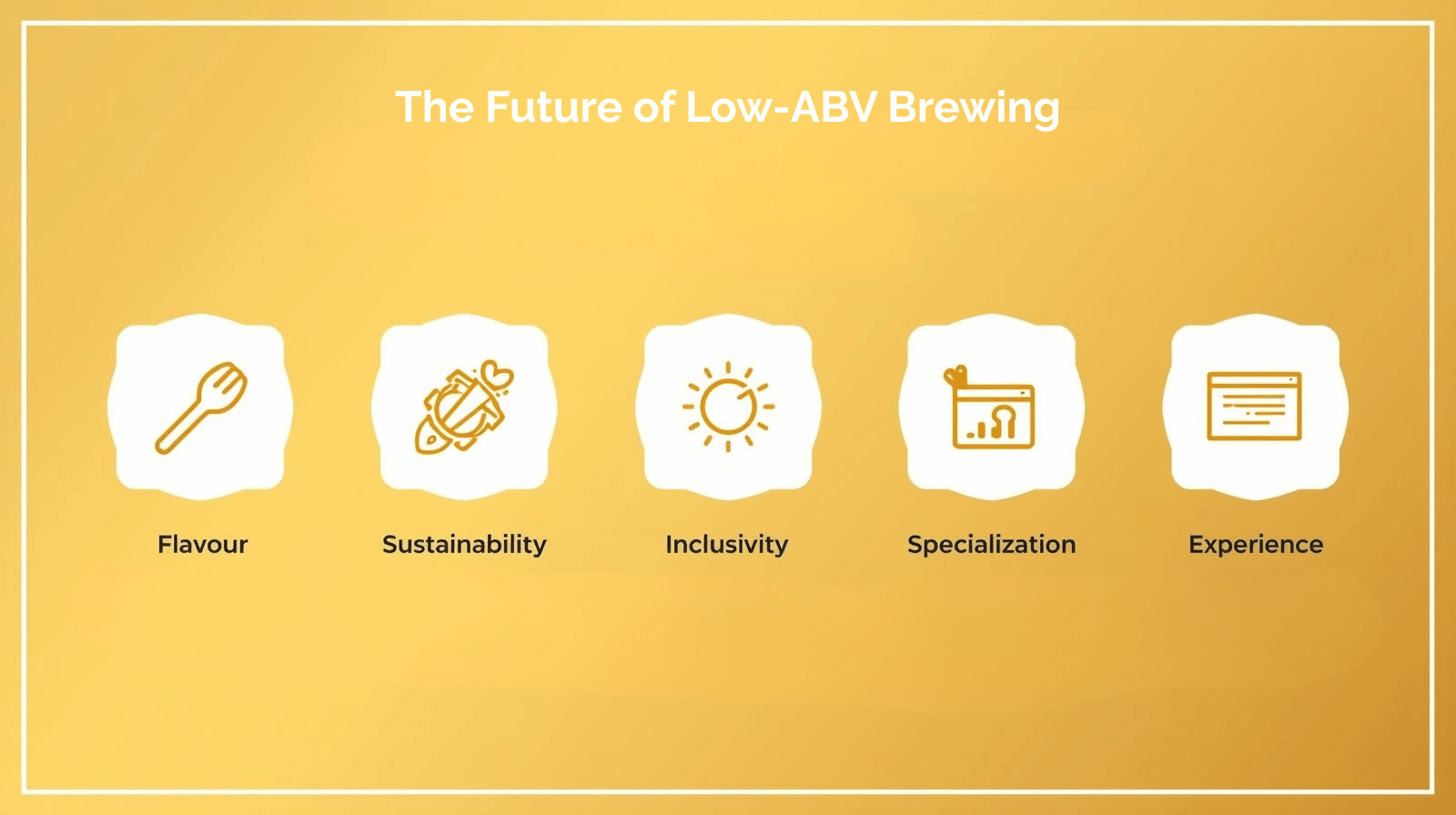
1. Flavor Will Keep Getting Bigger
Brewers are proving that “low” doesn’t mean “light” — at least not in taste. Expect the next generation of 0.0% and sub-4% beers to feature more complex hop profiles, deeper malt character, and even barrel-aging techniques adapted for non-alcoholic bases.
Many craft breweries are collaborating with hop farmers and yeast labs to experiment with aroma-driven ingredients that maximize flavor without fermentation heat. The next time you sip a 0.5% IPA bursting with mango and resin, you’ll be tasting science and art working together.
2. Sustainability Will Take Center Stage
Mindful brewing isn’t just about health — it’s also about impact. Low-ABV and non-alcoholic brewing often uses less grain, less energy, and less water, making it a more sustainable choice both environmentally and economically.
Breweries across Europe are embracing renewable energy, water-recapture systems, and recyclable packaging to align with greener practices. As consumers become more eco-conscious, sustainability will be as important as taste in shaping brand loyalty.
3. Inclusivity Will Redefine the Beer Scene
For decades, beer marketing centered around a narrow image of who “beer drinkers” were. That’s changing fast. The rise of mindful drinking has opened the door for everyone — from athletes and professionals to parents and people who simply prefer a clear head — to feel welcome in the craft beer community.
Bars and festivals are now dedicating entire sections to non-alcoholic craft beer experiences, ensuring no one feels left out of the celebration. This inclusivity — social, cultural, and even generational — is reshaping how breweries think about their customers.
4. Breweries Will Specialize in the Category
As demand grows, expect to see more breweries focusing exclusively on low-ABV and NA beers. What Athletic Brewing pioneered in the U.S. and Brulo expanded upon in the U.K., others are now following worldwide.
Dedicated brewing facilities allow better control over flavor, body, and fermentation — and they signal that “low” is no longer a side project but a craft in its own right.
These pioneers are building what might one day become the “third wave” of beer: traditional, craft, and mindful.
5. The Beer Experience Will Evolve
From beer yoga to sober festivals, the way people experience beer is transforming. Many venues are pairing low-alcohol menus with immersive tasting events, food pairings, and brewery tourism — ensuring that the beer experience remains social, sensory, and exciting.
Tours focusing on non-alcoholic brewing techniques are already appearing in places like Copenhagen, Berlin, and Barcelona, where innovation thrives. The future beer traveler will explore not only what to drink, but how it’s made.
The future of low-ABV and non-alcoholic craft beers isn’t just promising — it’s revolutionary. By combining science, sustainability, and social inclusion, brewers are crafting a future where everyone can raise a glass — and remember every toast the next morning.
FAQ: Everything You Need to Know About Low-ABV and Non-Alcoholic Craft Beers
What does “low-ABV” mean in craft beer?
A low-ABV craft beer typically contains between 2.5% and 4% alcohol by volume (ABV). These beers are brewed to deliver full flavor, aroma, and body — just with less alcohol, making them ideal for longer drinking sessions or mindful consumption.
Low-ABV brewing focuses on balance and refreshment rather than intensity, often using specialized malts and hops to maintain taste without increasing strength.
How are non-alcoholic craft beers made?
Non-alcoholic craft beers can be brewed in two main ways:
1️⃣ Limited fermentation, where yeast activity is intentionally restricted to produce minimal alcohol.
2️⃣ Dealcoholization, where alcohol is brewed normally and later removed via vacuum distillation or reverse osmosis, preserving aroma and flavor.
Both methods allow brewers to craft beers that taste authentic — not like watered-down imitations.
Can non-alcoholic beers make you drunk?
No. Most non-alcoholic craft beers contain less than 0.5% ABV — about the same as some fruit juices or ripe bananas. Drinking several bottles won’t intoxicate you because your body metabolizes such trace alcohol levels faster than they can accumulate.
However, those avoiding alcohol for medical or religious reasons should always check the label before purchasing.
Are low-ABV and non-alcoholic beers healthier?
They can be. Many contain fewer calories, less sugar, and fewer carbohydrates than standard beers, making them appealing to health-conscious drinkers.
That said, “healthier” doesn’t always mean “health food” — ingredients and brewing methods still vary. The real benefit lies in moderation: you can enjoy beer flavor without alcohol’s aftereffects.
Do low-ABV and non-alcoholic beers taste like real beer?
Thanks to modern brewing science, yes — and sometimes even better. Craft brewers now use advanced yeast strains, dry-hopping techniques, and malt layering to replicate full-bodied textures and complex aromas.
Many blind tastings show that the gap between traditional and alcohol-free beers has nearly vanished. Expect vibrant IPAs, velvety stouts, and crisp lagers that rival their stronger counterparts.
Can I use non-alcoholic beer in cooking?
Absolutely. Non-alcoholic and low-ABV beers add depth to stews, batters, marinades, and desserts — just like regular beer — without introducing extra alcohol. They work especially well in recipes where you want malt or caramel notes without bitterness or evaporation.
For instance, a 0.0% stout can enrich chocolate cake, while a low-ABV pale ale brightens fish and chips batter.
From brewing science to cooking creativity, these beers have moved far beyond novelty. Low-ABV and non-alcoholic craft beers now represent the most inclusive, innovative, and exciting corner of the brewing world — proving that good taste has no ABV limit.
Plan Your Own Beer Journey
Want to explore Europe’s mindful beer scene in person? 🍻
Discover brewery tours, tasting workshops, and local beer experiences through Viator — or book a cozy stay near your favorite festival using Hotels.com.
Whether it’s a tasting weekend in Bruges or a brewery walk in Barcelona, your next beer adventure is just a click away.
Conclusion
The world of low-ABV and non-alcoholic craft beers isn’t about less — it’s about more.
More creativity.
More inclusivity.
More reasons to raise a glass and stay fully present for every moment.
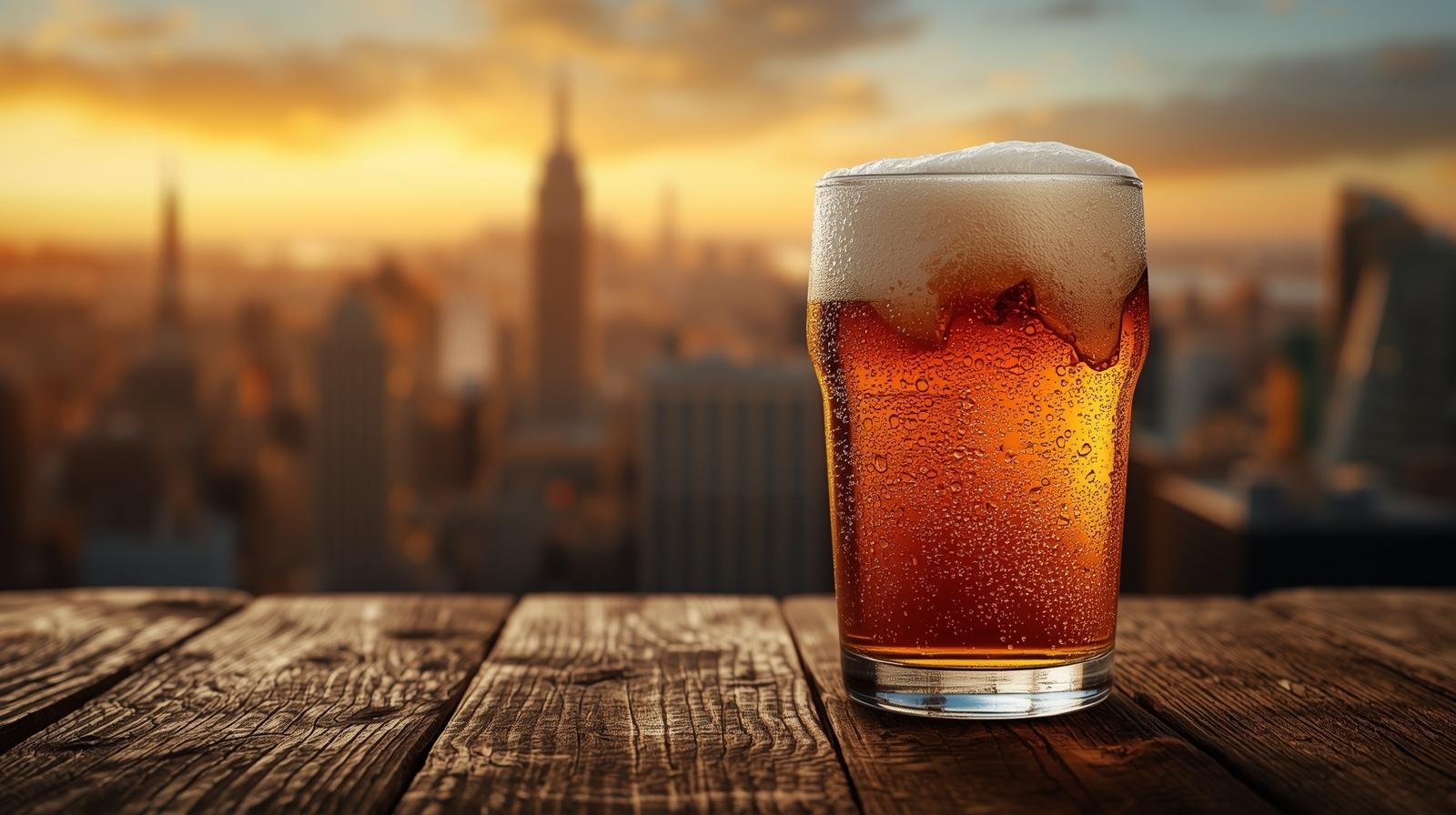
What was once considered a compromise has become one of the most exciting revolutions in modern brewing. Brewers from Copenhagen to Colorado are proving that flavor, craftsmanship, and community can thrive without alcohol ever being the star of the show. Whether you’re chasing tropical hops, creamy stouts, or crisp lagers, there’s now a mindful alternative that delivers every ounce of satisfaction — minus the hangover.
As we move through 2025, one truth stands out: the future of beer is broad enough for everyone. From classic drinkers exploring moderation to those who prefer a completely alcohol-free lifestyle, the modern beer world has never been richer or more diverse.
So next time you pour a pint — whether it’s a Guinness 0.0, a Brulo Lust for Life, or something you’ve never tried before — remember: great beer isn’t defined by its strength. It’s defined by the joy it brings, the company you share, and the craft that makes it possible.
Ready to explore more?
Keep your glass full of discovery with our related guides:
- 🍻 Barcelona Beer Guide 2025 — explore the Mediterranean’s rising beer capital.
- 🇬🇧 Top 10 IPA Beers in the UK 2025 — discover the UK’s hop-forward icons.
- 🌍 Best Oktoberfest Alternatives in Europe 2025 — find your next beer adventure beyond Munich.
Raise your glass — to craftsmanship, curiosity, and beer without boundaries.

